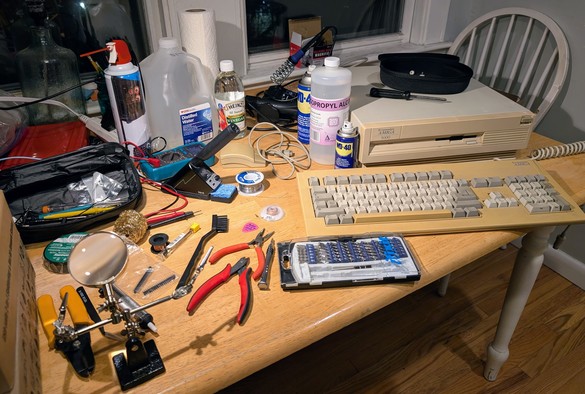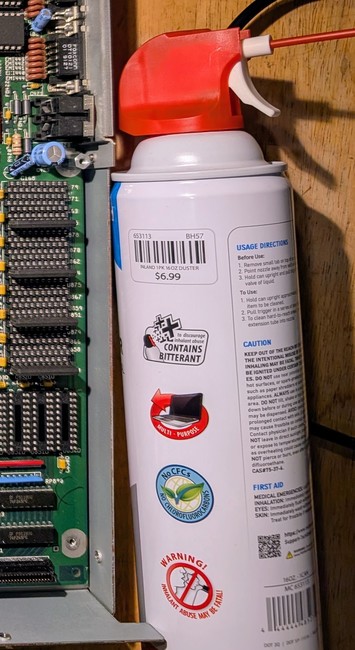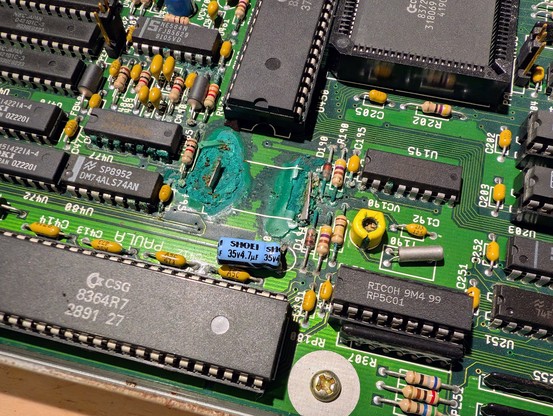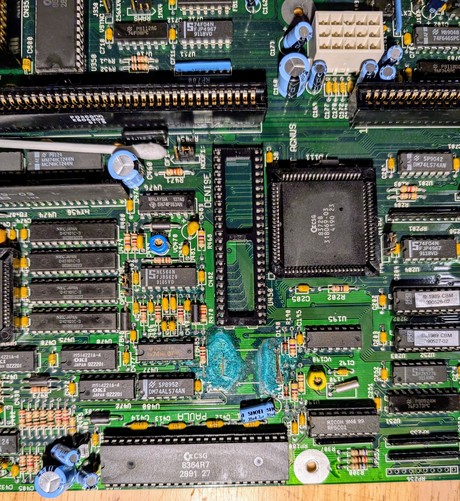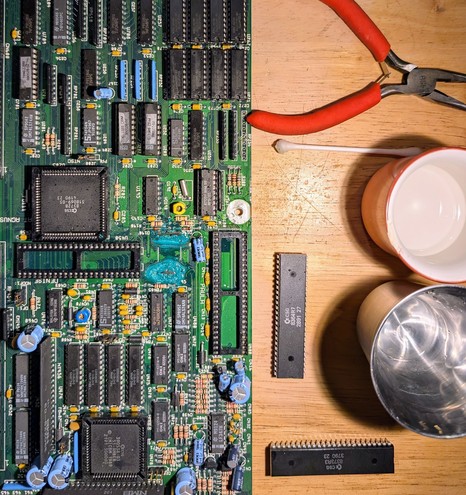Recent searches
Search options
The very first step after opening the A3000 case is blowing off all the dust.
Though I'm not too sure this compressed air can is safe on PCBs: if it condenses, it leaves white stains on the desk (you can see it briefly at the end of the video).
The label doesn't specify the exact composition of the "air", but there's a notice:
To discourage inhalant abuse
CONTAINS BITTERANT
And if you shake the can, there's a lot of liquid on the bottom. Did they forget to desiccate the air before compressing it??
If you spray sideways, the liquid pours out and freezes, leaving that white halo all around
Anyway, gotta choose your air wisely!
Next, I tried desoldering the Varta battery, first with a soldering iron at maximum temperature, then with the hot air gun.
I gave up when the battery started melting. If it hadn't already leaked its content, it might have exploded!
So this wasn't a good idea...
@codewiz Oh no, you grab some sharp cutters and snip the legs. Then you can desolder the remains, but the most important part is getting that bomb off the board. Then you can assess what damage the battery electrolyte did to the board underneath.
@anaerin That was indeed my next move!
As you can see, I'm quite clumsy with these tools. What can I say... I'm just a software engineer
Safety note: I normally wear glasses, but I should put on protective goggles before snipping metal pins off a PCB. They fly around unpredictability, and these are coated in caustic chemicals too
And this is what the Amiga 3000 PCB looks like after removing the clock battery.
One of the Amiga hardware experts I've shown this photo to commented: "I've seen alot worse". I guess I got lucky?
The alkaline solution inside the Ni-Cd battery forms this green goo with the tin, lead and copper. This compound is hard to scrape and melts at higher temperature than the PCB can take.
I'm also not too sure about the toxicity of cadmium and lead in this form
Following the advice of Amiga repair guides, I rubbed the green goo with 5% distilled white vinegar. This should neutralize the alkaline solution and stop it from further corroding the traces.
But another Amiga hardware expert scolded me for putting vinegar on a vintage PCB, because it will also etch good traces.
Anyway, I quickly flushed the vinegar with distilled water. Contrary to popular belief, water doesn't actually damage #electronics, as long as you let it completely dry before powering up the board.
Then I applied copious amounts of pure isopropyl alcohol, which is commonly used to clean PCBs before and after soldering, as it dissolves flux and other impurities without disturbing plastic and metallic parts.
Isopropyl is also non-conductive and evaporates quickly.



